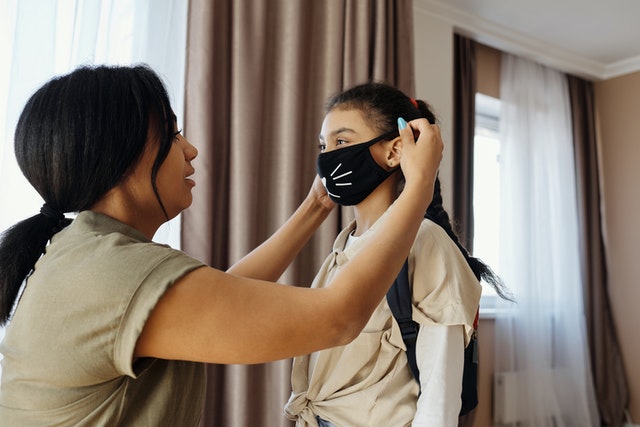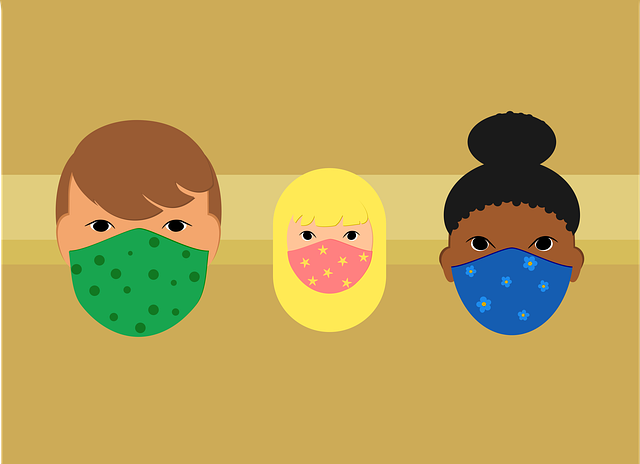COVID-19 may be too complex to explain to children. What it does and how it had put the world into a halt. Most notably, to the age group, preteens and below. While the whole world struggles in doing what they can to flatten the curve of the pandemic while carrying out social distancing rules and making a habit out of handwashing, some carry a big responsibility of having to explain it to their children. It may be from a parent or a guardian; either way, guidance is needed to ensure your child understands the required changes to their lives and the lives of society, and that they need not be afraid.
To avoid misinformation, the Center for Communicable Disease (CDC) had put out a guide on how to disseminate information as friendly as possible to our youngsters. But there are certain reminders that you should take note of first.
- They are kids, don’t forget that fact.
- You are your child’s personality.
- Information from reliable sources only.
Always base each guideline below on these three constants.
A little something about COVID-19
COVID-19 stands up for “Coronavirus Disease 2019”. It was in December 2019 that it was discovered when a rapid number of people got sick by it. Hence, you could say that this is a new virus. That’s why sometimes, you would come across names for it like “novel” coronavirus, which means it’s a “new strain” of coronavirus.
Since it’s yet to be analyzed, this new strain puts everybody at risk simply because there’s no immunity built around it. And this is what medical professionals and health experts are trying to find out.
Now, here’s how to tell your child about COVID-19:
- Understand and Research For Yourself First.
You cannot teach something that you don’t understand. So, before you open the conversation about COVID-19, check out what your local department of health have in terms of statistics, preventive measures, recent updates, and effective interventions. With the World Health Organization, Centre for Communicable Disease, and all others working for global health make most of this information available online. Talk to your local physicians, nurses, and health care providers rather than using social platforms as resource information for learning about COVID-19.
- Talk Using Simple Terms and Concepts.
Consider the first reminder. Kids may not be familiar to some medical terms, but they are sponges. It’s not hard for them to retain information. They are very curious so, take their lead when they ask questions. Somehow, it gives you a grasp of how much they know already.
Begin by asking how they feel towards missing school. You may expect that the conversations could more or less, go like:
Parent: (Name of child). Do you know why you don’t go to school as often as before?
Child: I think I know, but I’m not sure …
Parent: What do you know?
Child: I think it has something to do with coronavirus…
Parent: You’re correct. Where did you learn about it?
Child: In school, the teachers said …
From this example of open exchange, it says a lot about how much knowledge a kid has concerning COVID-19. It keeps their sense of autonomy intact when you give them the chance to express themselves. Issues with sharing may also be brought up. While growing up, we’ve become familiar with the term “sharing is caring” but, in the current situation, it seems that the opposite is true. This may be a challenging concept to introduce. While we don’t want kids to shy away from the concept of sharing, it is important in these times that they keep their burrow and be blankies and their toys safely to themselves during school and after.
- Be a Doer of What You Teach.

The best way to implore learning to your child is to be the example of what you preach. Let’s face it. These kids tend to follow more of what we do in a flawless carbon copy, more than what we say. It may be because of its repetitive nature. But probably it’s owed more to the fact that they love doing things with you. You are their person, so they develop their sense of commitment even stronger when you are there to back them up. So wash hands with them and if it says 20 seconds in which you can sing “Happy Birthday”, make that exciting. Make it fun. Not only will you create good childhood memories. You’ll be tattooing the importance of doing it 100% and not 19 seconds, nor 19.5, but 20 seconds, in their mind.
- Check Their Understanding of The Things You’ve Shared.
Make sure to encourage them to ask questions. Assure them that they can approach you when they need understanding at any time. It can get complicated since it involves blood, immune systems, and bats. But, if you use toys, being every kid’s universal language, you may find ways to bond, develop interpersonal skills, cognitive skills, and build a connection with your child. This can be done by asking your child to act out a scenario of social-distancing via their favourite toys, for example: using a Jellycat bashful bunny, or some other stuffed toys to demonstrate how they would act when walking to school with another passerby.
Parents and guardians are the first teachers. While you are working at home, there are adjustments with yourself that are forced to surface on top of being a parent. Stay positive with how growth is enhanced with this kind of setting. Enduring this pandemic together with your family, no matter how bad it may be, invests in human kind’s learning curve. How rewarding to have this opportunity to educate your children at the comfort of your home.




